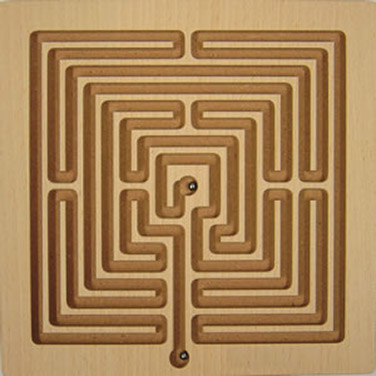
Mazes come in different guises as single or multi-player games. The aim is to reach a certain point inside the maze from outside, pass through every corridor in the maze or find the way out from a particular point inside.
History
The maze motif appears in many civilisations with different meanings. The spiral-shaped maze on Irish megaliths (3000 BC), the Cretan myth of Theseus and the Minotaur, or the labyrinth in Chartres Cathedral (thirteenth century) are just a handful of examples. Mazes are also popular elements in landscape gardening.
Mathematics
Mazes can be tackled within the scope of topology and graph theory. Topological questions involve studying the properties of mazes, while graph-theory methods can be used to determine the solution to the problem.
There are different methods to pass systematically through every corridor in a maze. The simplest is to keep following the wall on your right-hand (or left-hand) side. However, it only works if the maze does not contain any islands. General methods were described by the French mathematician Gaston Tarry and the French telecom engineer Trémaux at the end of the nineteenth century. According to Trémaux, you begin from any point and move to the next crossroads, where you either take a new path or a path you have only been down once so far. If this is not possible, you turn back. But you never take a path you have already taken twice. If you reach a dead end, you turn back. This path is then regarded as barred as it has been taken twice.